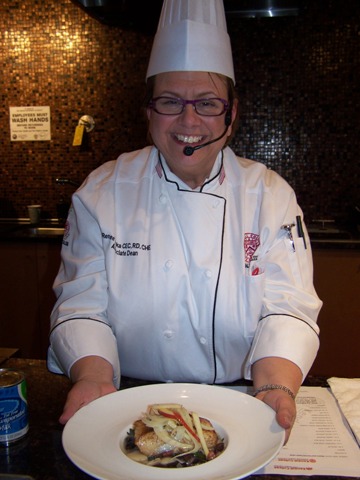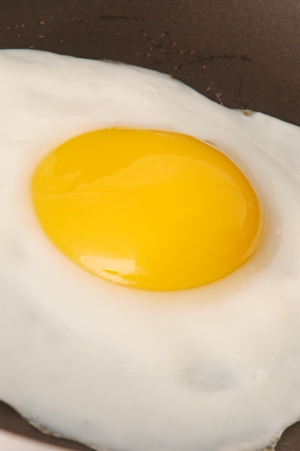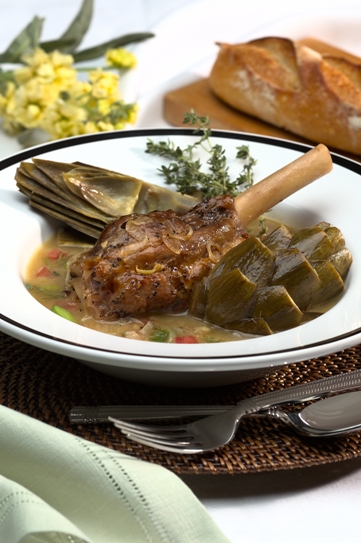Lesson Plans (44)
In this section you will find lesson plans from previous GMC issues or that have been published on the Web site before.
Lesson Plan: An Intro to Healthy Cooking
Super User Thursday, 18 February 2010 14:41By Renee Zonka, R.D., CEC, CHE
 This presentation on general healthy-cooking principles is an ideal introductory lesson that speaks to today’s wellness concerns.
This presentation on general healthy-cooking principles is an ideal introductory lesson that speaks to today’s wellness concerns.
“Nothing is poison and everything is poison; the difference is in the dose," said Theophrastus Philippus Aureolus (who called himself “Paracelsus”), a Swiss doctor and alchemist who lived from 1493 to 1541.
This lesson plan follows that principle, advocating moderation and instructing on methods of lowering fat and maintaining eating quality, cooking gluten-free, using natural sweeteners, modifying recipes and understanding product labels. Three separate recipe downloads—for a high-fiber, low-fat halibut dish featuring giant Peruvian limas and Scarlet Runner beans, pressure-cooked to lock in nutrition; a gluten-free Christmas beer cake; and a corn/crab chowder modified to lower calories and cholesterol, all written for the home cook—assist in applying understanding.
Renee Zonka is the associate dean of The School of Culinary Arts at Kendall College, Chicago.
Downloads: Healthy Cooking Tactics, Corn and Crab Chowder with Basil, Gluten-Free Christmas Beer Cake, Halibut with Savory Beans and Apple-Fennel Salad
Photo caption: Renee Zonka presented this lesson on healthy-cooking principles to 80 personal chefs at the American Personal & Private Chef Association’s 2010 Summit at Kendall College in February. Here she shows her Halibut with Savory Beans and Apple-Fennel Salad featuring pressure-cooked Giant Peruvian Limas and Scarlet Runner Beans from Indian Harvest (www.IndianHarvst.com).
Lesson Plan: Adding Fried Eggs to Your Curriculum
Super User Thursday, 17 December 2009 10:38By Colin Roche, MBA, CEC, CCE, FMP, CHE
 Knowing how to prepare the different stages of a fried egg is an important task that can easily be taught to your class in your culinary lab.
Knowing how to prepare the different stages of a fried egg is an important task that can easily be taught to your class in your culinary lab.
Eggs are among the most versatile and nutritious foods. In addition, eggs possess many qualities that make them indispensible in the kitchen. It is important for students to know how to cook eggs, a skill that is not as simple as it may seem.
This downloadable lesson plan in MS Word provides egg nutrition, fried-egg descriptions and cooking methods. Focuses of study include explaining the differences between the five types of fried eggs, demonstrating how to cook the five types, and sharing why knowing how to fry an egg is important in the foodservice industry. An egg lab instructs on having students prepare and plate the various types of fried eggs.
Lesson Plan: Braising & Stewing Using American Lamb
Super User Monday, 23 November 2009 08:36By Mark M. DeNittis
 Students will learn how value lamb cuts can increase menu interest and brand image while contributing to an operation’s bottom line.
Students will learn how value lamb cuts can increase menu interest and brand image while contributing to an operation’s bottom line.
This downloadable education guide in MS Word provides an insightful look at the basic skills and methods of braising and stewing American lamb. Focuses of study include an overview of product acquisition, cuts, safe handling, applied cooking techniques, flavor profiles and nutrition. Classroom activities, discussion questions and research resources are designed to assist instruction.
Upon completion of this presentation, the student will be able to better understand American lamb, as well as the essentials of braising and stewing for common “value cuts” that contribute to the versatility and profitability of American lamb.
Mark M. DeNittis is a chef-instructor at Johnson & Wales University, Denver, and president, chef and salumerie of DeNCo Enterprise, LLC.
Lesson Plan: Maple—from Tree to Table
Super User Friday, 04 September 2009 23:48Courtesy of Québec Delegation Chicago for DoMoreWithMaple.com
 It’s more than just a topping for pancakes.
It’s more than just a topping for pancakes.
This downloadable education guide in MS Word provides an overview of the production, grading and flavor of real maple syrup. Focuses of study include storage, cooking and baking, nutrition, a tasting sensory profile, a classroom activity, discussion questions and additional research and resources.
Upon completion of this guide and tasting, the student will have a basic understanding of maple-syrup production and maple products available, and will be able to differentiate real maple syrup from maple-flavored table syrups.
USA Rice in the Culinary Classroom
Super User Sunday, 31 May 2009 22:52By Andrew Schloss
Education is the mission of the USA Rice Federation, which is committed to supporting the professional growth of culinary students and future chefs. As the global advocate for all segments of the U.S. rice industry, the federation is made up of rice producers, millers and merchants—people who work with rice from the ground up and have a passion for providing high-quality products along with information that is reality-based and well tested.
Award-Winning Lesson Plan on Center-of-the-Plate
Super User Monday, 01 September 2008 10:09Preparing a rack-of-lamb dinner for two, from ACF’s 2008 Educator of the Year
By Wilfred Beriau, CEC, CCE, AAC
 Center-of-the-plate proteins, including American lamb, are the focus of this lesson plan for freshman in the Associate of Applied Science degree program at Southern Maine Community College in South Portland. The course, of which this lesson is a part, addresses the basic fabrication of meat, fish and poultry; stocks; the five major sauces; derivative sauces; coulis, jus lié, and reductions. The class covers moist and dry methods of cooking that demonstrate appropriate cooking methods for a wide array of products.
Center-of-the-plate proteins, including American lamb, are the focus of this lesson plan for freshman in the Associate of Applied Science degree program at Southern Maine Community College in South Portland. The course, of which this lesson is a part, addresses the basic fabrication of meat, fish and poultry; stocks; the five major sauces; derivative sauces; coulis, jus lié, and reductions. The class covers moist and dry methods of cooking that demonstrate appropriate cooking methods for a wide array of products.
A key component of this lesson plan involves the preparation and presentation of a NAMP/#204A domestic rack of lamb with accompaniments of a starch, a vegetable, jus lié and herb garnish.
Celebrating Diversity in the Culinary Classroom
Super User Friday, 01 August 2008 10:05The method is the constant, and the ingredients are the variables.
By Samuel Glass, CEC, CCE, CCA
 As the demographic of culinary schools shifts to a much more multicultural environment, embracing and celebrating cultural diversity is becoming part of the everyday life of culinary institutions. The challenge for culinary instructors is in finding a way to integrate cultural diversity into the curriculum in a tacit manner, one in which students might not recognize the true objectives, yet at the same time, achieve a sense of accomplishment and pride in their own cultural heritage and cuisine.
As the demographic of culinary schools shifts to a much more multicultural environment, embracing and celebrating cultural diversity is becoming part of the everyday life of culinary institutions. The challenge for culinary instructors is in finding a way to integrate cultural diversity into the curriculum in a tacit manner, one in which students might not recognize the true objectives, yet at the same time, achieve a sense of accomplishment and pride in their own cultural heritage and cuisine.
One of the mantras that I have always used as a culinary educator is, “The method is the constant and the ingredients are the variables.” Keeping that mantra in mind, I have found a way to celebrate the diversity of my students, while meeting the objectives of the curriculum.
The Cuisine of India
Super User Sunday, 02 March 2008 08:35A lesson plan.
By Mary Petersen and Ronald S. Wolf, CCC, CCE
This lesson plan focuses on the history of and cultural influences on Indian cuisine, the topography and climate that affect food production and preparation, key ingredients and foods, cooking methods and common equipment, a focus on culinary regions, and dietary restrictions as dictated by various religions, among other aspects. A handout as an MS Word document is available for download and copying.
